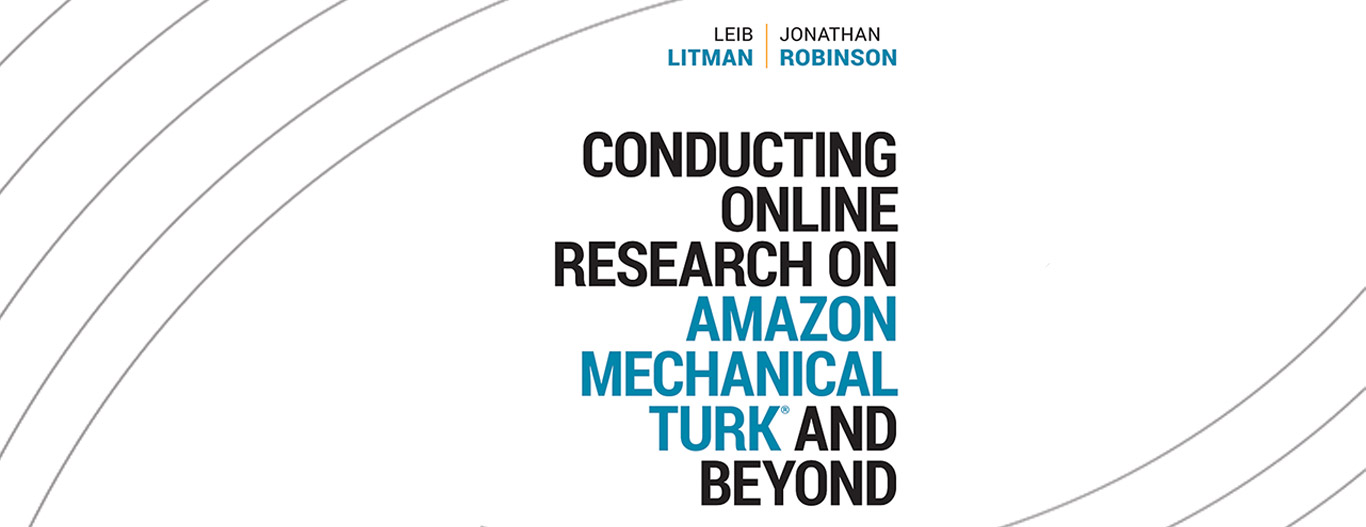Surveying the First Quarantined Community in the United States: Lessons Learned About Psychology and Public Health

By Sarah L. Weinberger-Litman, PhD, Zohn Rosen, PhD, & Leib Litman, PhD
How the COVID-19 Outbreak Started in the United States
Early March marked a historic turning point in the United States. Despite pockets of outbreak on the West Coast and a clear acceleration of infection across Western Europe, most Americans still regarded the novel coronavirus as a distant threat. The threat abruptly became proximal when, on March 2, the first community acquired case of COVID-19 was confirmed in New York State.
The identification of ‘Patient-One’ led to the first large-scale quarantine order in the U.S. in over a century. An attorney from New Rochelle, NY, ‘patient -one’ had not traveled to any of the countries identified by the CDC as potential infection areas, and was not tested for COVID-19 until several days into his illness when he was already critically ill. In the days before his diagnosis, patient-one (who has since recovered), attended services and life-cycle events at his Westchester synagogue and traveled to his Midtown office via mass transit. His children attended different educational institutions in New York City. In an attempt to prevent further community spread, several hundred families from lower Westchester and the Northwest Bronx were ordered into quarantine within hours of his diagnosis.
The surreal and often chaotic nature of the situation would rapidly emerge over several days as the full scope of the COVID-19 crisis began to unfold. Those placed under quarantine included several hundred children, some of whom were on their way to school when the decision to close schools was made. At one point, quarantine orders were lifted only to be extended again within 24 hours. State and city jurisdictions issued directives that conflicted with each other. Widespread testing for COVID-19 was largely unavailable even for those who became ill. And New York State did not enter PAUSE until March 22, almost three weeks after the first community was placed under quarantine.
While at this point most of us consider ourselves experts at quarantine, true quarantine— where people are placed into isolation and movement is completely restricted—has been reserved for those testing positive for COVID-19 or those thought to be directly exposed to someone testing positive. Quarantine is a commonly used strategy for containing infectious disease and has been used in recent years to slow the SARS, Ebola and MERS epidemics. However, in the U.S., quarantine has not been implemented on a wide-scale since the infamous 1918 Flu Pandemic. Given the infrequency of quarantine orders, surprisingly little is known about the psychological impact of quarantine even though understanding the psychosocial impact of quarantine during the experience itself is critical in order to mitigate the long-term consequences of prolonged isolation and uncertainty.
Investigating the Psychological Impact of Quarantine
Within days of the first quarantine order in NYS, we surveyed the quarantined communities in Westchester County and the Northwest Bronx – the first communities to be directly affected by the emerging outbreak. The research team included epidemiologists, psychiatrists, psychologists and public-health and survey experts from Columbia University’s Mailman School of Public Health, NYU Langone’s Division for Infections Diseases, Harvard Medical School’s Department of Psychiatry and CloudResearch. Over the course of two days in March (the 15th to the 17th), we conducted the first study to investigate the psychological experience of quarantine. Respondents were recruited by email invitations circulated via community organizations (e.g., schools, social groups, religious organizations). We asked people to report on the stress and anxiety they were experiencing along with a variety of factors that may exacerbate or mitigate the negative psychological consequences of quarantine. Two preliminary reports from this research can be found here and here.
The Results
The early days of the pandemic were filled with uncertainty, fear, and a lack of transparent communication on the part of governmental agencies. As might be expected in such highly stressful circumstances, people reported extremely elevated stress and anxiety. Sixty nine percent of quarantined people reported moderate to severe levels of distress while 24.8% reported levels of distress considered severe to extreme. Even though people experience stress within these ranges from time to time, such stress is a concern when it persists over time.
Stress Remains High During Quarantine Due to Lack of Quality COVID-19 Information
Because our sample consisted of people in various stages of quarantine, we were able to compare stress levels over different days. We found that stress remained high throughout the entire quarantine period. This finding is important because we know chronically-elevated levels of distress are associated with a variety of negative psychological and physical health outcomes such as immune function, overall well-being, and the tendency to turn to negative coping strategies like substance use or other negative health behaviors.
Our goal was to understand which aspects of individuals’ experiences were most relevant to these extremely high levels of distress. We were interested in understanding the individual and situational characteristics that predicted higher levels of distress and, on the flip side, whether there were factors that reduced or helped alleviate distress and anxiety. We found that one of the most important factors driving respondents’ stress was their perception of the quality of information being communicated by state and local agencies. The earliest days of the pandemic were filled with fear of infection, and uncertainty with regard to transmission as well as the parameters regarding quarantine. Notably over 60% of participants rated the clarity of information communicated by state and local departments of health as inadequate. Only 5.2% rated these communications as “clear and informative.” This lack of clarity in communications was directly associated with measurable increases in psychological anxiety and distress, with lower levels of confidence in public health authorities being associated with higher levels of distress and anxiety.
Participants Have Faith in Their Local Leadership
In contrast, participants reported very high levels of trust in the leadership of local community and religious organizations who assumed the role of liaison between public health agencies and those under quarantine. In fact, people felt most supported by their local community organizations which provided informational support as well as assistance with the logistics of quarantine. Respondents consistently mentioned how grateful they were to their local leadership for providing them with up-to-date information, arranging educational opportunities, having people volunteer to help with food delivery and errands for those under quarantine and remote religious services. The picture that emerged was one of a true public health partnership between local community leaders and public health officials. This community-launched response to an immediate crisis can be viewed as a model for communities around the country where governmental agencies are often short on resources, and at times, not viewed with nearly as much confidence as local leadership.
Increased Exposure to News & Media Contributed to Anxiety and Stress in Quarantine
Another noteworthy finding was that certain individual behaviors were highly associated with elevated distress and anxiety levels. Specifically, spending more time reading COVID-related news, communicating with others about COVID, and poor sleep quality were all associated with increased distress/anxiety. Previous research has suggested that following catastrophic events, greater media exposure is associated with higher levels of residual trauma and symptoms of PTSD. In addition, while poor sleep quality can certainly be a consequence of anxiety, there is also a large amount of evidence suggesting that poor sleep exacerbates anxiety symptoms. Furthermore, it is known that engaging in overuse of electronic devices, especially before bed, directly impacts the neurological system responsible for regulating sleep. While these factors were among those most predictive of anxiety, they are also modifiable, and there is ample evidence to suggest that reducing media exposure and practicing good “sleep hygiene” (e.g. limiting device usage before bed, maintaining a sleep schedule) to improve sleep quality are likely to reduce distress/anxiety.
Conclusion
For the first time in over a century, an entire community was quarantined in the United States. In a matter of hours, the community was thrust into a constantly changing situation that was frightening, confusing, and at times chaotic. This was historically significant as it foreshadowed what much of the rest of the nation would experience in the weeks to come.
This study assessed the psychological response of individuals while under quarantine orders and showed that local communities can play a critical role in alleviating the fear, distress and confusion that arises in times of national crises. Among this unique group of individuals, we found clinically elevated levels of distress and anxiety that persisted over the course of quarantine. These levels of distress/anxiety were predicted by a variety of demographic, psychological, informational, and behavioral factors. Specifically, feeling that information coming from local and state agencies was inadequate was directly associated with feeling more anxious. Spending more time reading about and listening to COVID-related media was among those behavioral factors most closely tied to distress as was reduced sleep quality.
So much has changed since those early weeks in March and no one predicted the scope of the crisis that was to emerge. Furthermore, at that point it was still unknown that community transmission of COVID was already widespread. But in those early days, this community directly experienced the psychological and medical impact of what we now see as shortcomings in preparedness on the part of federal, state and local officials. Our data suggest that local leaders of religious and community organizations were quick to fill in the gaps in information and support that official agencies left open.
While things have improved significantly in the Northeast, new “hotspots” are emerging all across the country. Our understanding of COVID’s transmission and course has grown considerably since the earliest days of the pandemic but as infection and hospitalization rates continue to climb in previously unaffected areas, the psychological toll of the crisis needs to be addressed. As state and local jurisdictions are often still using piecemeal approaches to containment, we are unlikely to see widespread lockdown but are likely to see regional increases in the need for quarantine and extreme social distancing measures. The psychological response of the individuals in the very first quarantined community are still a relevant model for some of the most salient predictors of distress. The role that local communities play in responding to public health crises can be used to inform efforts aimed at mitigating what in some instances has been the devastating negative psychological toll of the pandemic.

